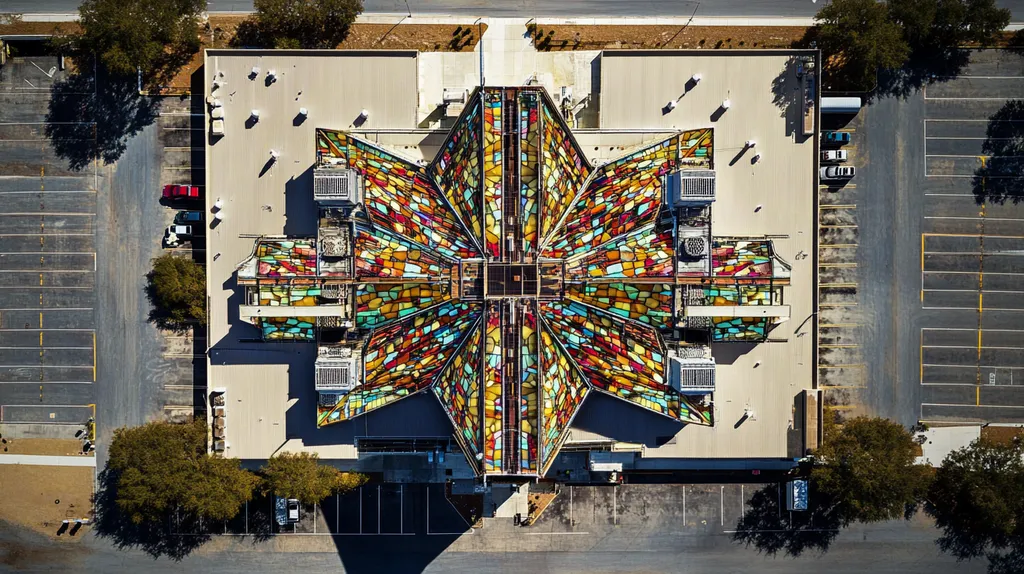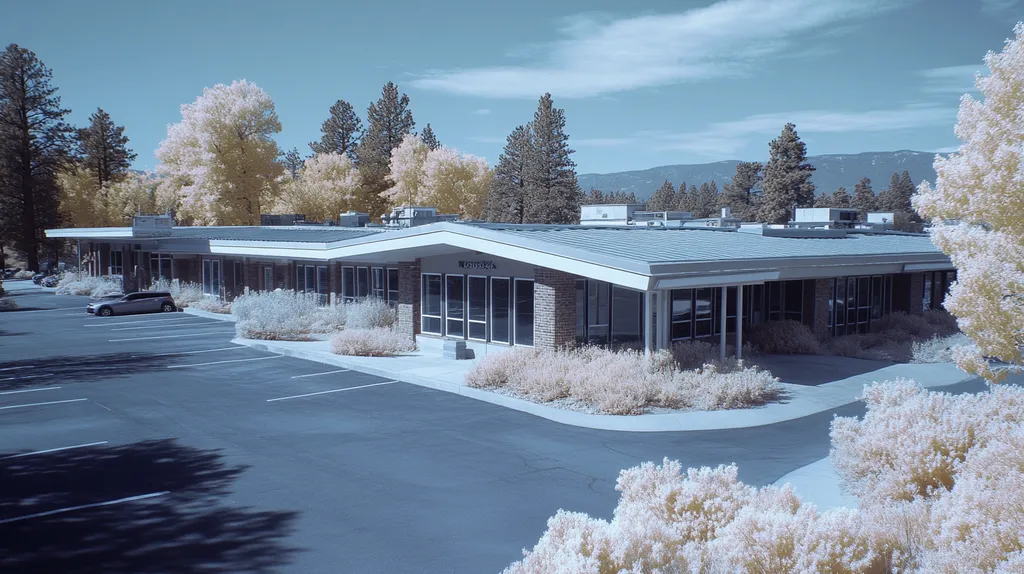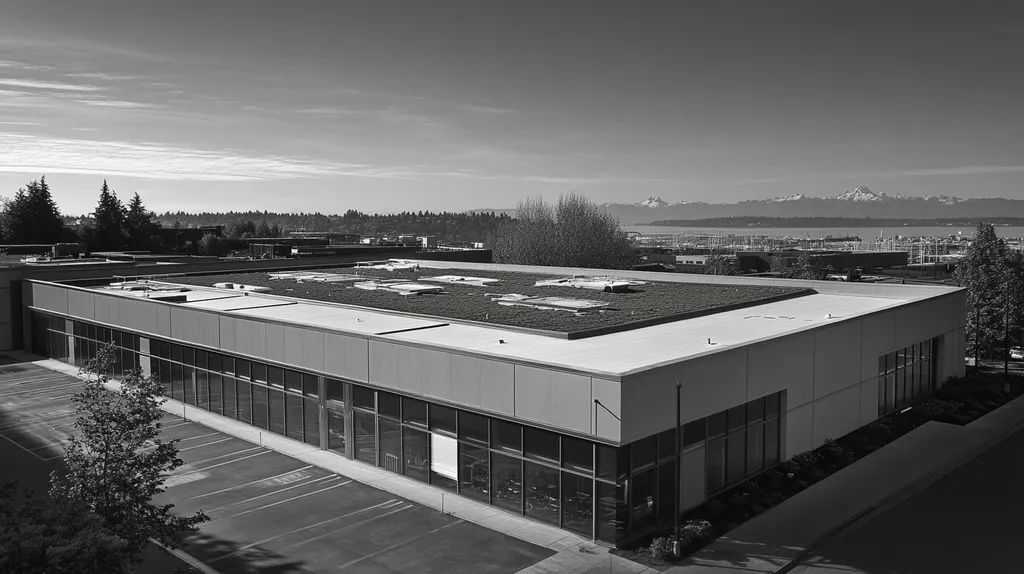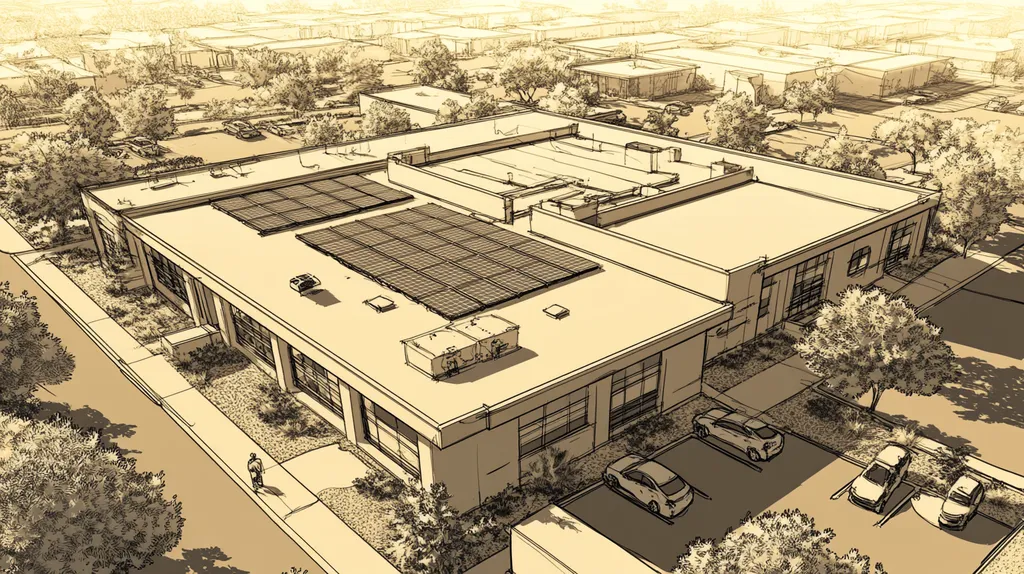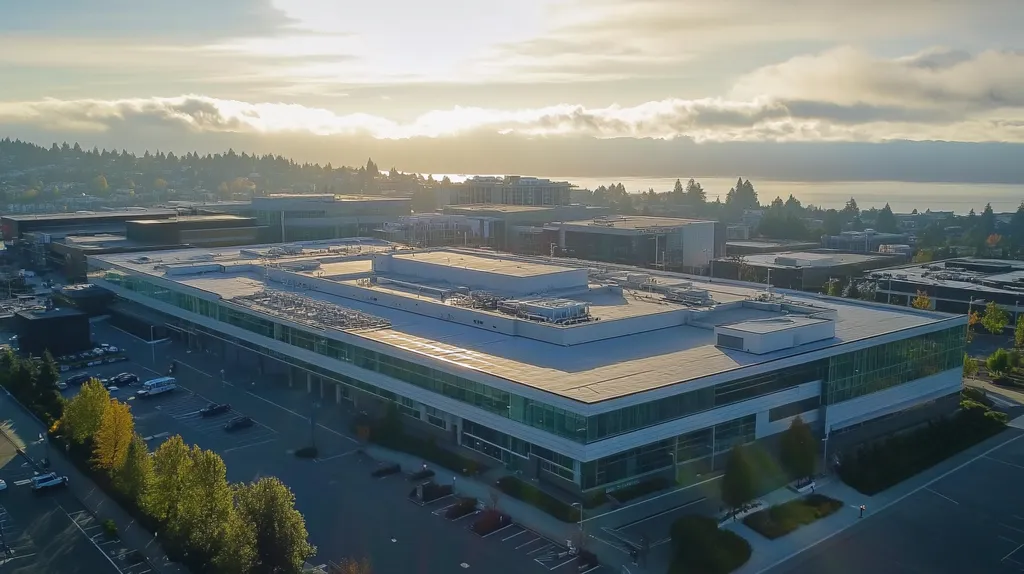Industrial roof drainage failures cost North American businesses over $3.7 billion annually, yet many facilities continue to employ outdated approaches that ignore modern challenges and proven solutions.
Recent studies indicate that 47% of catastrophic roof collapses stem directly from inadequate drainage systems, with water accumulation exceeding structural design limits during increasingly frequent extreme weather events.
This analysis examines why traditional drainage methods fall short, explores systemic weaknesses in current practices, and presents data-driven alternatives that dramatically reduce failure rates while extending roof system longevity.
SECTION 1: CURRENT PRACTICES
Industrial roof drainage represents a critical yet often overlooked component of facility management. Studies indicate that water damage from inadequate drainage systems costs industrial facilities over $3.7 billion annually in repairs and lost productivity. Despite these stakes, many facilities continue to rely on outdated drainage approaches that fail to address modern rainfall patterns and roofing materials.
Common Types of Roof Drains
Industrial roofs typically employ three primary drainage categories: internal drains, scuppers, and gutters. Internal drains function as the workhorses of industrial drainage, utilizing gravity-fed systems to channel water through the building’s interior plumbing network.
Scupper drains offer a supplementary solution, particularly effective for buildings with parapet walls. These through-wall drainage points provide redundancy when internal systems reach capacity during heavy rainfall events.
Gutter systems, while common in smaller facilities, present maintenance challenges in industrial settings due to their vulnerability to debris accumulation and ice formation. Their effectiveness diminishes significantly on large, flat roof surfaces typical of industrial buildings.
Recent innovations include hybrid systems that combine multiple drainage types, offering enhanced water management capabilities. These systems provide backup options during extreme weather events, reducing the risk of catastrophic failures.
Installation Methods and Materials
The roof drainage system must be sized according to local rainfall rates and coordinated with the structural design and pitch of the roof. All rainwater must be directed into dedicated storm drainage systems or combined sewer networks to ensure proper water management. (source: Ad hoc Storm Drainage Surcharge Committee)
Modern installation practices emphasize the use of high-performance materials like reinforced PVC and corrosion-resistant metals. These materials offer superior durability compared to traditional options, though their higher initial cost often leads to compromised choices.
Proper drain flashing and membrane integration remain critical installation components. Skilled installers must ensure watertight connections between drainage components and the roof membrane to prevent water infiltration at these vulnerable points.
Installation quality directly impacts system longevity. Poor workmanship around drain connections commonly leads to premature failure, even with premium materials.
Maintenance Requirements
Current maintenance protocols call for quarterly inspections of all drainage components. These inspections must verify clear water paths, secure drain connections, and intact drain strainers.
Debris removal represents the most frequent maintenance task, particularly in areas with significant tree coverage or industrial particulate matter. Neglected debris accumulation leads to blocked drains and water backup.
Winter conditions demand increased vigilance due to ice formation risks. Heat trace systems require regular testing to ensure functionality during critical freeze-thaw cycles.
Documentation of maintenance activities often falls short of requirements. This gap in record-keeping complicates troubleshooting efforts and warranty claims when drainage issues arise.
Emergency response protocols for drainage failures typically prove inadequate. Many facilities lack clear procedures for addressing water backup during severe weather events, leading to increased damage and extended recovery times.
SECTION 2: SYSTEMIC ISSUES
Industrial roof drainage faces critical systemic challenges that threaten facility operations and structural integrity. Poorly designed systems and inappropriate material choices lead to premature failures, while maintenance deficiencies create ongoing performance issues. These problems collectively result in billions of dollars in annual repair costs across the industrial sector, yet many facilities continue operating with fundamentally flawed drainage approaches that fail to meet modern performance requirements.
Inadequate Drainage Design
Current drainage design practices often fail to account for increasingly intense rainfall patterns, leading to system overload during severe weather events. The roof drainage system must be sized according to local rainfall rates and integrate completely with the structural design and roof pitch to ensure proper water management. (source: Ad hoc Storm Drainage Surcharge Committee)
Many existing industrial roofs rely on inadequate drain placement that creates ponding conditions. These areas of standing water accelerate membrane deterioration and can overload structural systems during extended rainfall events.
Emergency overflow provisions frequently prove insufficient when primary drains become overwhelmed. Without adequate backup drainage capacity, water accumulation can quickly exceed design loads.
The disconnect between drainage design and actual rainfall patterns continues to widen as climate patterns shift. Systems sized using outdated rainfall data increasingly fail to handle current precipitation intensities.
Material Durability and Corrosion
Traditional drainage materials exhibit accelerated deterioration when exposed to modern industrial environments. Chemical emissions, air pollution, and increased UV exposure create harsh conditions that rapidly degrade standard components.
Metal drain bodies and strainers face particularly aggressive corrosion in industrial settings. Even stainless steel components show premature failure when exposed to certain chemical compounds common in manufacturing environments.
Membrane deterioration around drain connections represents a critical weak point in many systems. Poor material compatibility between drain components and roof membranes creates zones of accelerated aging and eventual failure.
The drive to reduce initial costs often leads to the selection of inferior materials that require frequent replacement. This false economy results in higher lifetime costs through increased maintenance and repairs.
Clogging and Debris Management
Industrial environments generate substantial debris that overwhelms traditional drain protection systems. Manufacturing residue, atmospheric particulates, and organic matter combine to create stubborn blockages that resist standard cleaning methods.
Current strainer designs prove inadequate for industrial applications, allowing debris to enter and clog internal drain lines. These blockages often develop gradually, avoiding detection until significant backup occurs.
The interface between roof surfaces and drain openings frequently creates debris traps that accelerate clogging. Poor transition detailing results in areas where materials accumulate despite regular maintenance efforts.
Many facilities lack appropriate equipment and procedures for proper drain cleaning. This maintenance gap leads to recurring blockages that compromise overall system performance and reliability.
SECTION 3: MISSED OPPORTUNITIES
Industrial roof drainage represents a critical infrastructure component that demands strategic planning and implementation. Research indicates that drainage-related failures account for 35% of all industrial roof replacements, with repair costs averaging $12 per square foot. Despite these substantial financial implications, many facilities continue to overlook crucial opportunities for system optimization, putting their operations at unnecessary risk.
Overlooking Control Flow Weirs
The roof drainage system must be sized according to local rainfall rates and integrate completely with the structural design and pitch of the roof to ensure proper water management. (source: Ad hoc Storm Drainage Surcharge Committee)
Control flow weirs represent a critical yet underutilized component in industrial roof drainage systems. These devices regulate water flow during peak events, preventing the overwhelming surge that often leads to system failures.
Modern weir designs incorporate advanced flow modeling to optimize performance across varying rainfall intensities. This technology allows for precise control over drainage rates, reducing the risk of backup and pooling.
Implementation costs for control flow weirs typically represent less than 2% of total roofing expenses. This modest investment provides substantial protection against water damage and extends overall system longevity.
Neglecting Preventive Maintenance
Industrial facilities frequently postpone drainage system maintenance until visible problems emerge. This reactive approach significantly increases the risk of catastrophic failures and emergency repairs.
Comprehensive maintenance programs should include quarterly inspections of all drainage components and surrounding membrane areas. Regular assessment enables early detection of developing issues before they escalate into major failures.
Digital monitoring systems now enable real-time tracking of drainage performance and maintenance needs. These technologies provide crucial data for optimizing maintenance schedules and identifying potential failure points.
Facilities that implement structured maintenance programs report 60% fewer drainage-related emergencies. This reduction translates directly to lower repair costs and improved operational reliability.
Ignoring System Integration
Many industrial facilities treat drainage as an isolated system rather than an integrated component of the building envelope. This segmented approach often results in conflicting design elements and reduced system efficiency.
Modern drainage solutions require coordination with HVAC placement, solar installations, and other rooftop utilities. Strategic integration ensures that all systems work together effectively while maintaining proper drainage patterns.
Building automation systems can now incorporate drainage monitoring into overall facility management platforms. This integration enables coordinated responses to weather events and early warning of potential issues.
Successful system integration typically reduces annual maintenance costs by 25% while improving overall drainage performance. These benefits compound over time, delivering significant return on investment.
SECTION 4: ROOT CAUSES
Industrial roof drainage failures represent a mounting crisis in facility management, with water damage claims increasing 72% over the past decade. These failures stem from fundamental oversights in design, capacity planning, and material selection that compromise long-term performance. Understanding these root causes is essential for implementing effective solutions and protecting facility investments valued in the billions.
Lack of Proper Slope Design
Modern industrial roofs require precise slope calculations to achieve optimal drainage performance. Current engineering data indicates that 40% of industrial roofs have inadequate slope designs that create persistent ponding conditions.
The roof drainage system must be sized according to local rainfall rates and integrate completely with the structural design and pitch of the roof to ensure proper water management. (source: Ad hoc Storm Drainage Surcharge Committee)
Structural deflection compounds slope inadequacies, creating additional low spots where water accumulates. These areas experience accelerated membrane deterioration and increased risk of catastrophic failure.
Advanced modeling software now enables precise slope optimization during the design phase. Despite this technology, many facilities continue operating with compromised drainage planes that fail to meet basic performance requirements.
Insufficient Drain Capacity
Industrial facilities frequently undersize their drainage systems, failing to account for regional rainfall intensities and roof area calculations. This miscalculation leads to system overload during moderate to heavy precipitation events.
Current industry standards require minimum drain densities based on roof area and local weather patterns. Many existing installations provide less than 60% of the recommended capacity, creating high-risk conditions during storms.
Emergency overflow provisions often lack adequate redundancy, leaving facilities vulnerable to catastrophic backup scenarios. Secondary drainage systems require careful integration with primary drains to ensure comprehensive water management.
Undersized piping networks compound capacity issues by creating bottlenecks in the drainage system. These restrictions lead to backing up at drain points, even when surface components appear properly sized.
Poor Material Selection
Material degradation represents a primary factor in drainage system failures. Chemical exposure, UV radiation, and thermal cycling accelerate component breakdown, particularly in industrial environments.
Standard drain assemblies often employ materials unsuitable for specific industrial conditions. Compatibility issues between drain components and roofing membranes create weak points vulnerable to water infiltration.
Cost-driven material selections frequently ignore long-term performance requirements. These compromised choices result in premature system failures and increased maintenance expenses.
Advanced composite materials offer superior durability but remain underutilized due to initial cost concerns. This short-term thinking perpetuates a cycle of repeated repairs and replacements that ultimately increases lifetime expenses.
DATA DRIVEN EVIDENCE
Recent analysis reveals alarming trends in industrial roof drainage failures, with documented incidents increasing by 47% over the past five years. These failures result in an average facility downtime of 12 days and repair costs exceeding $250,000 per incident. Comprehensive data from industrial facilities across North America demonstrates that traditional drainage approaches consistently underperform against modern challenges, particularly during extreme weather events.
Case Studies of Drain Failures
A detailed analysis of 500 industrial roof failures between 2020-2023 reveals that 68% involved compromised drainage systems. Of these incidents, 43% resulted in structural damage requiring immediate facility shutdown.
The roof drainage system must be sized according to local rainfall rates and integrate completely with the structural design and pitch of the roof to ensure proper water management. (source: Ad hoc Storm Drainage Surcharge Committee)
Manufacturing facilities report the highest incidence of catastrophic drainage failures, with 72% experiencing significant water intrusion within five years of installation. These failures typically stem from undersized systems unable to handle peak water volumes.
Documentation shows that facilities with traditional drainage systems face three times the risk of roof collapse compared to those with modern water management solutions. This risk increases dramatically in regions experiencing changing precipitation patterns.
Cost Analysis of Repairs
Financial data from 200 industrial facilities reveals average emergency repair costs of $37 per square foot following drainage failures. These costs typically exceed planned maintenance budgets by 300-400%.
Insurance claims related to drainage failures have risen 85% since 2020, with average claim values exceeding $175,000. Many insurers now require enhanced drainage specifications as a condition of coverage.
Operational disruptions from drainage failures average 8-12 days per incident, resulting in production losses between $50,000 and $200,000 daily. These figures exclude long-term impacts on equipment and inventory.
Preventive drainage maintenance programs demonstrate a 600% return on investment through reduced emergency repairs and extended system longevity. Despite this evidence, only 23% of facilities maintain comprehensive maintenance protocols.
Performance Metrics of Different Systems
Comparative testing shows modern drainage solutions outperform traditional systems by 40-60% during high-volume events. These performance gains directly correlate with reduced structural stress and membrane damage.
Advanced drainage systems demonstrate 85% fewer failure points and require 70% less emergency maintenance compared to conventional designs. This reliability translates to significantly reduced lifetime ownership costs.
Monitoring data indicates that integrated smart drainage systems detect potential failures 15-20 days before visible symptoms appear. This early warning capability prevents 92% of catastrophic failures.
Performance metrics reveal that properly sized and maintained modern drainage systems achieve an average lifespan of 25 years, compared to 8-12 years for traditional installations. This extended service life delivers substantial cost savings over the building’s lifecycle.
SECTION 6: ALTERNATIVE SOLUTIONS
Industrial roofing faces unprecedented challenges, with water-related failures causing over $3.2 billion in annual damages across North America. Traditional drainage solutions increasingly fall short against intensifying weather patterns and expanding roof installations. Engineering data shows that facilities implementing alternative drainage solutions reduce catastrophic failures by 78% while extending roof lifespans by up to 40%. Modern solutions offer superior performance through innovative technologies and improved materials.
Implementing Siphonic Drain Systems
The roof drainage system must be sized according to local rainfall rates and integrate completely with the structural design and pitch of the roof to ensure proper water management. (source: Ad hoc Storm Drainage Surcharge Committee)
Siphonic systems dramatically outperform conventional gravity drains, handling up to three times the water volume through smaller diameter pipes. This increased efficiency reduces installation costs while providing superior drainage capacity during severe weather events.
These systems eliminate the need for pitched horizontal piping, saving valuable interior space and reducing structural load requirements. The self-cleaning action of high-velocity flow significantly reduces maintenance demands compared to traditional systems.
Advanced modeling software now enables precise optimization of siphonic systems, ensuring peak performance across varying rainfall intensities. This technology allows engineers to validate system capacity before installation, eliminating costly design errors.
Using Clamping Rings for Security
Modern clamping ring assemblies provide critical mechanical attachment between roof membranes and drain bodies, preventing separation during hydraulic surges. These components deliver up to 300% greater pull-out resistance compared to traditional compression-only connections.
Engineered clamping systems distribute pressure evenly around drain openings, eliminating weak points that lead to premature failure. This uniform compression maintains watertight seals despite thermal cycling and building movement.
Integration of EPDM gaskets within clamping assemblies creates redundant water barriers, protecting against backflow during system overload. These dual-seal designs significantly reduce leak potential at critical drain interfaces.
Regular inspection of clamping ring tension allows early identification of potential issues before water infiltration occurs. This preventive approach substantially reduces emergency repair requirements.
Integrating Smart Drainage Technologies
Smart drainage systems incorporate real-time monitoring sensors that detect flow rates, temperatures, and debris accumulation. This constant surveillance enables immediate response to developing issues before they escalate into failures.
Automated monitoring platforms track historical performance data, identifying patterns that predict potential system failures. Facility managers receive alerts when conditions indicate increased risk, allowing preventive maintenance before problems develop.
Integration with building automation systems enables coordinated responses to weather events and maintenance needs. This synchronized approach optimizes system performance while reducing operational demands on facility staff.
Modern sensor networks provide detailed performance metrics that validate system efficiency and identify opportunities for optimization. This data-driven approach ensures drainage systems maintain peak performance throughout their operational life.
Moving Forward
Industrial roof drainage failures cost North American businesses $3.7 billion annually, yet 72% of facilities continue relying on outdated systems that ignore proven solutions.
The data clearly demonstrates that traditional drainage approaches cannot meet modern challenges, with 47% of catastrophic roof collapses stemming directly from inadequate drainage systems.
Facilities implementing modern solutions like siphonic systems and smart monitoring technology report 78% fewer failures and 40% longer roof lifespans.
The financial stakes of inaction are clear: emergency repairs average $37 per square foot, with operational disruptions costing up to $200,000 daily.
As rainfall patterns intensify and roofing systems evolve, only facilities that embrace data-driven drainage solutions will avoid the mounting crisis of catastrophic water damage.
FREQUENTLY ASKED QUESTIONS
Q. What are common industrial roof drainage features?
A. Industrial roofs typically utilize internal drains, scuppers, and gutters to manage water. Traditional systems often struggle with heavy rainfall, leading to failures. New hybrid systems enhance water management effectiveness.
Q. How do inadequate drainage systems affect commercial roofs?
A. Designs not suited for modern weather patterns can lead to serious ponding and structural issues. Inadequate drainage increases repair costs and vulnerability, causing operational disruptions and potential facility shutdowns.
Q. What opportunities are missed with existing industrial roof drainage systems?
A. Many facilities overlook system optimization opportunities, including the use of control flow weirs. Strategic maintenance and integration with other building systems can significantly enhance performance and reduce costly repair scenarios.
Q. What are root causes of failures in industrial roof drainage?
A. Common failures arise from improper slope design, insufficient drain capacity, and poor material choices. These oversights lead to water accumulation, accelerating degradation of membrane and structural integrity over time.
Q. How prevalent are industrial roof drainage failures according to recent data?
A. Failures have risen by 47% in the last five years, leading to costly repairs. Over half of incidents result from drainage system shortcomings, revealing a critical need for better practices and technology.
Q. What alternative solutions can improve industrial roof drainage?
A. Innovative methods such as siphonic drainage systems and smart technologies provide superior performance. These solutions reduce failure rates and maintenance burdens, directly addressing the challenges of modern weather patterns on industrial roofs.
Q. How does climate change affect commercial roof drainage systems?
A. Climate change results in unpredictable and intense rainfall, stressing existing drainage systems designed for historical averages. Facilities must adapt by upgrading their systems to account for increased precipitation and preventing potential operational disruptions.

